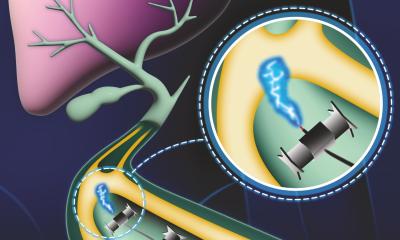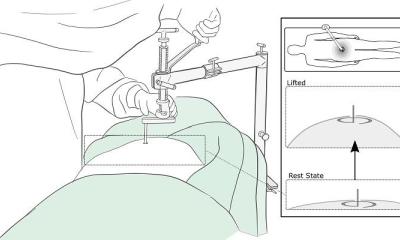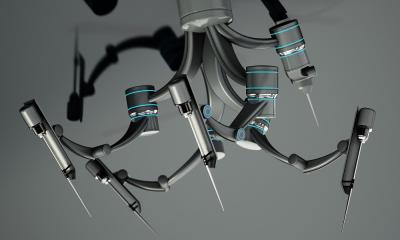Computer assisted surgery, a synonym for new techniques being pursued in clinical practice
News about a unique system “modiCAS®” from the University of Siegen, Germany
Surgical interventions are not radically altered by computer assistance but the quality and quantity of diagnostic information is continuously increasing leading to more transparency for patients. Therefore there is an increased demand on surgeons to improve the quality of therapeutic methods, operate with high precision and excellent reproducibility and document their work.
To support the surgeon in this challenge a research team from the Centre for Sensor Systems at the University of Siegen, Germany has designed a system for complete technical assistance in surgical procedures. Now ready for clinical applications the team lead by Dr Wahrburg set itself high goals. They wanted a highly modular computer- and robot based system that could be adapted for universal application; capable of supporting the surgeon at all the steps of a surgical intervention from pre-operative planning to intra-operative execution. So they have developed “modular interactive computer assisted surgery” modiCAS® for short.
The modiCAS® solution provides complete modularity, the surgeon can decide how much technology to include in each procedure. The components include, software for pre-operative planning, a 3-D localising system, a mechatronic assistant system and a control computer. In The system has been applied to total hip replacement. The surgeon can plan the procedure using their office PC, deciding how to implant the prosthesis based on CT and X-ray. The results are then recorded on the patient’s digital file for intra-operative use.
To implement this planning correctly, transmitters are used to register the geometry of the patient’s bones using an optical infrared stereo camera. The recorded values are then aligned with the pre-operative data. Further transmitters are placed on the bone and the mechatronic arm. This setup enables the correction of the mechatronic assistant in case of patient movement, automatically and in real-time. This unique feature is called “patient tracking”.
The system was used successfully for the first time for total hip replacement in 2002 at the Orthopaedic University Clinic at Frankfort, Germany.
The modiCAS® solution meets the demands for precision, reproducibility and documentation while enabling the surgeon to maintain control of the procedure. Adaptable to any surgical technique it does not significantly extend operating times.
To find out more visit: http://www.modicas.de/
20.11.2008











